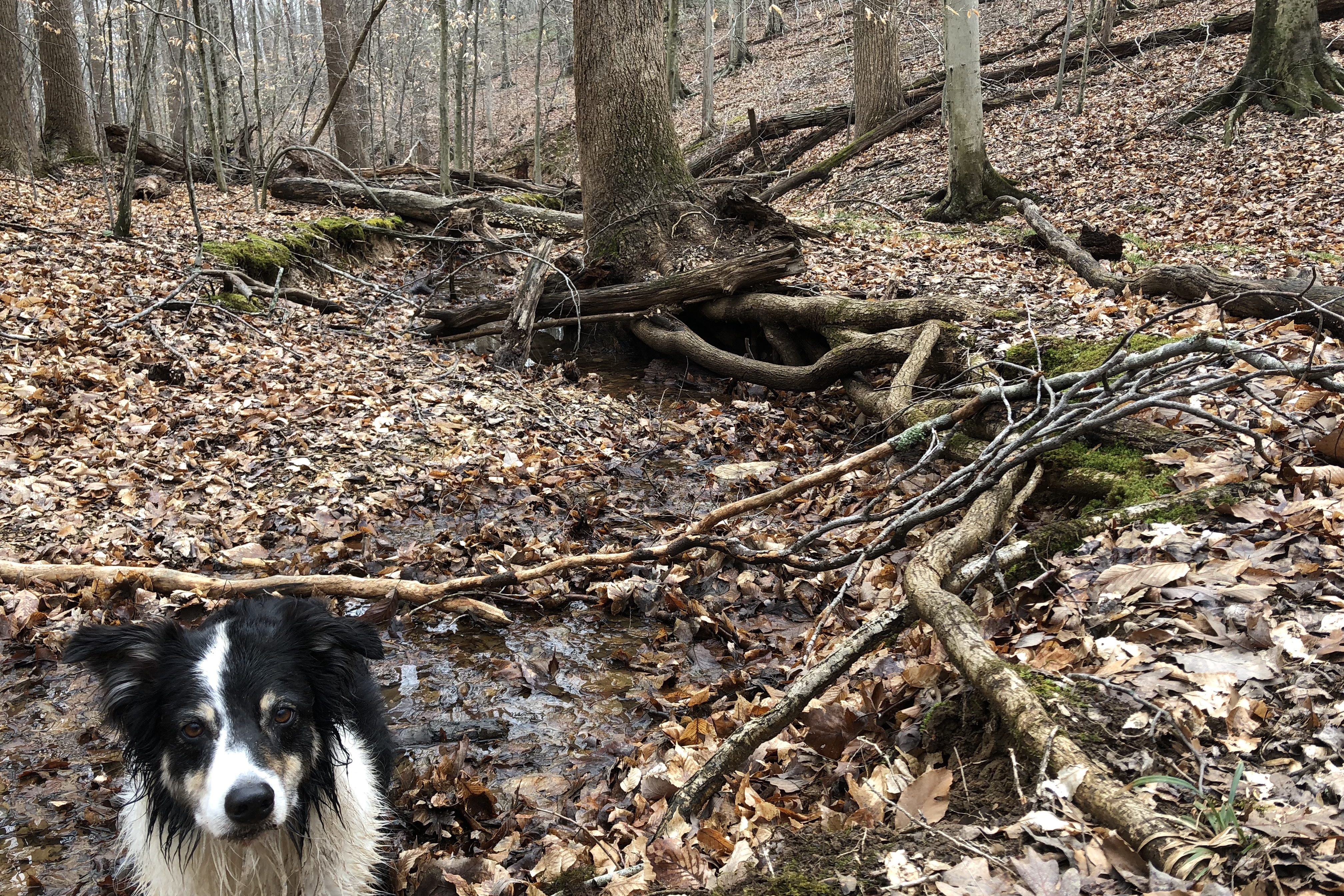In this series of posts you will learn some basic information about tree roots. After reading this information, you should have a better understanding of roots and be able to make reasonably educationed decisions regarding situations that involve tree roots. This post focuses on the functions and types of roots.
Like other professions, according to the International Society of Arboriculture, tree root terminology is very diverse and not standardized. As I was researching for this series of posts, I came upon discrepancies even within publications from the same site. Please bear with me if the terminology I chose isn’t exactly what you had heard before. Unfortunately, lack of standardized terminology makes any subject a little more confusing to understand.
Also, the study of roots is difficult because they are underground. I’ve gotten lots of interesting photos of root structure from uprooted trees.
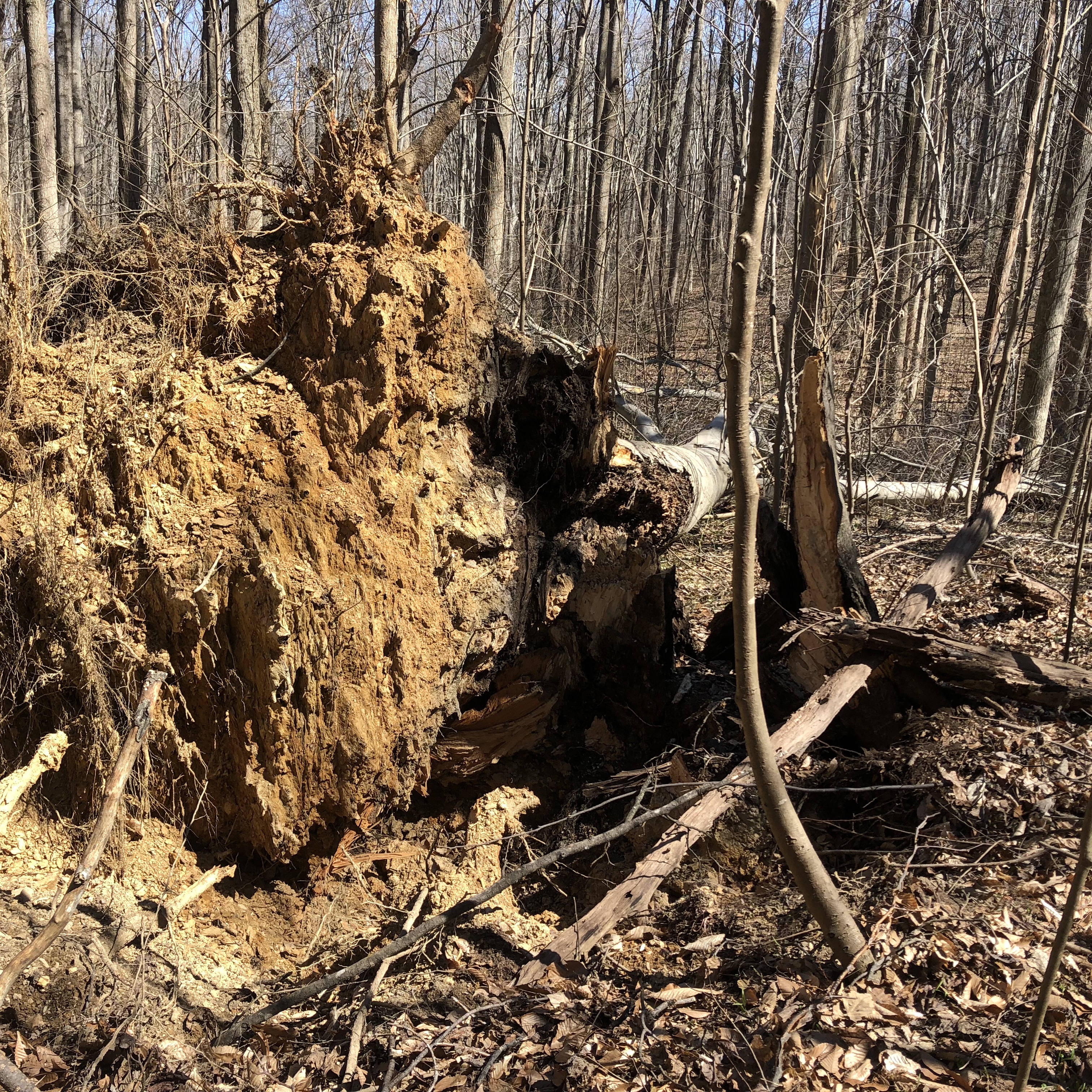
Roots are the food supply line. They are the pipelines for water and minerals, plus they are part of the carbohydrate storage system and have a role in hormonal signaling. The photo of this uprooted tree clearly illustrates how roots provide nutrients up the tree trunk. See this post for a full article with pictures and implications of damaged missing roots.
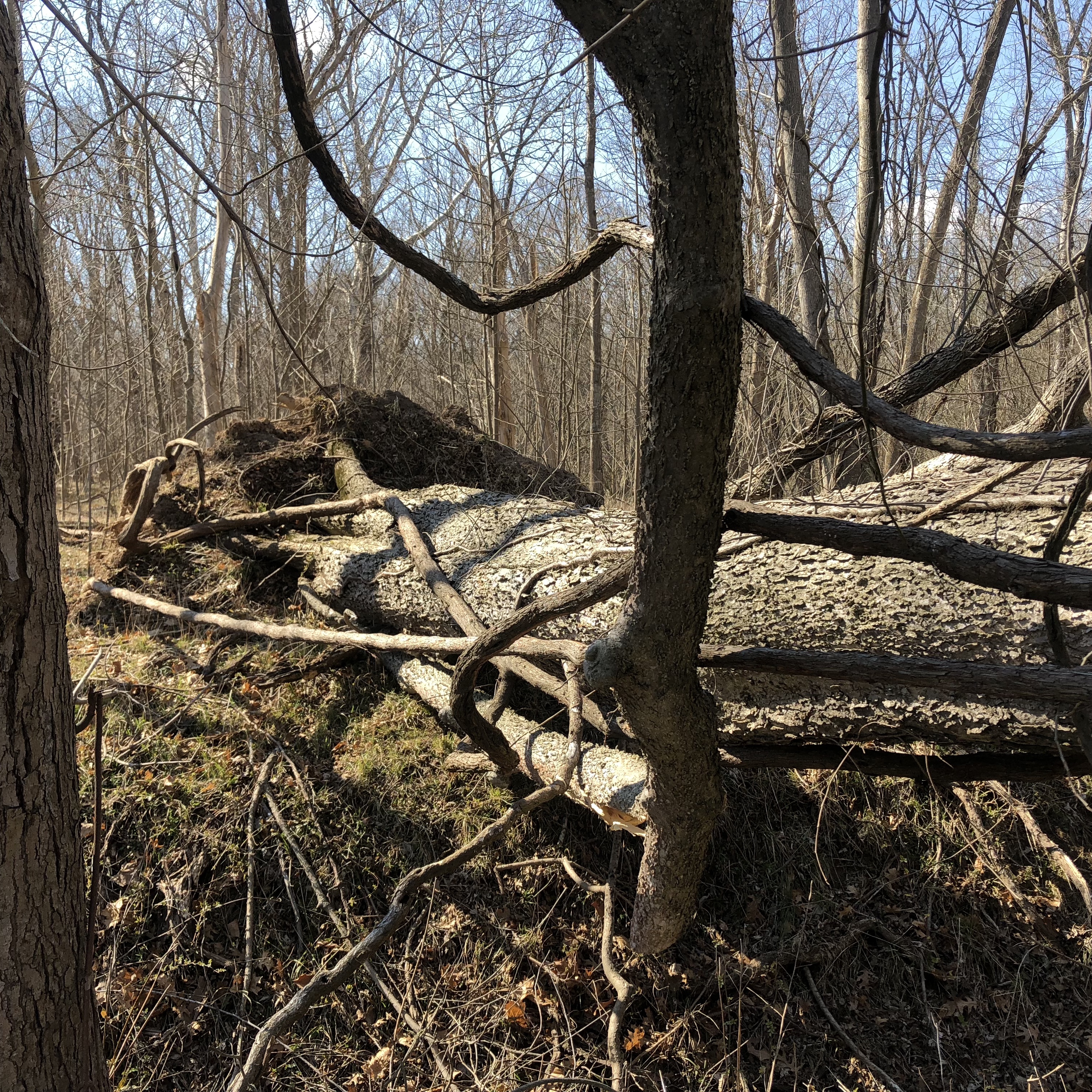
Roots other major function is that they anchor trees to the ground. This failure is mostly evident after a storm when trees are blown over by wind or topple over due to saturated ground. Sometimes they will fail without apparent cause just due to faulty root systems.
Woody Roots
Roots are sometimes classified as woody and non-woody. Woody roots have undergone secondary growth, are rigid, and perennial. They are sometimes referred to as structural roots, and as they increase in length, they usually decrease in size. Their main function is to create a sound structural system underground to anchor the tree and provide a base for non-woody roots.
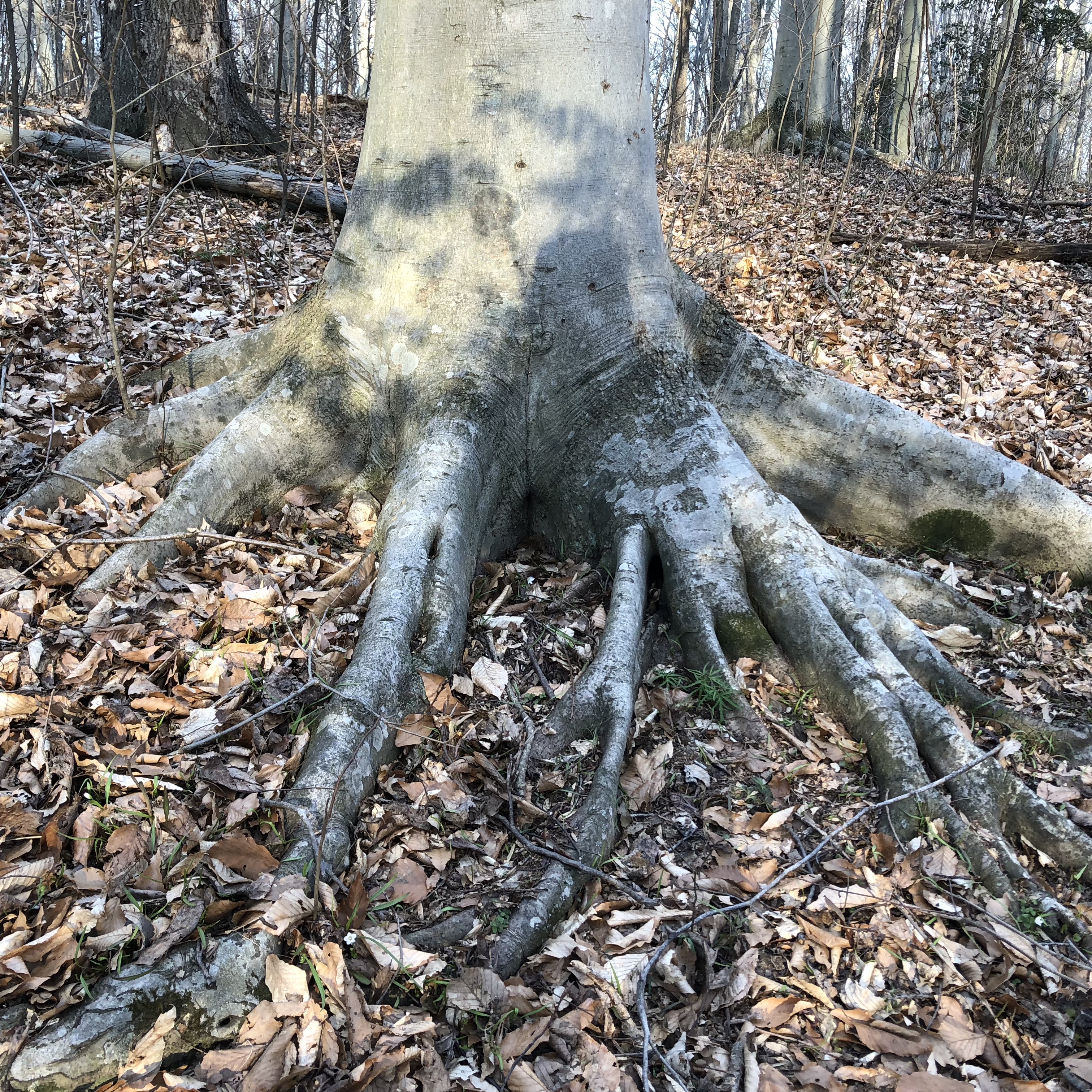
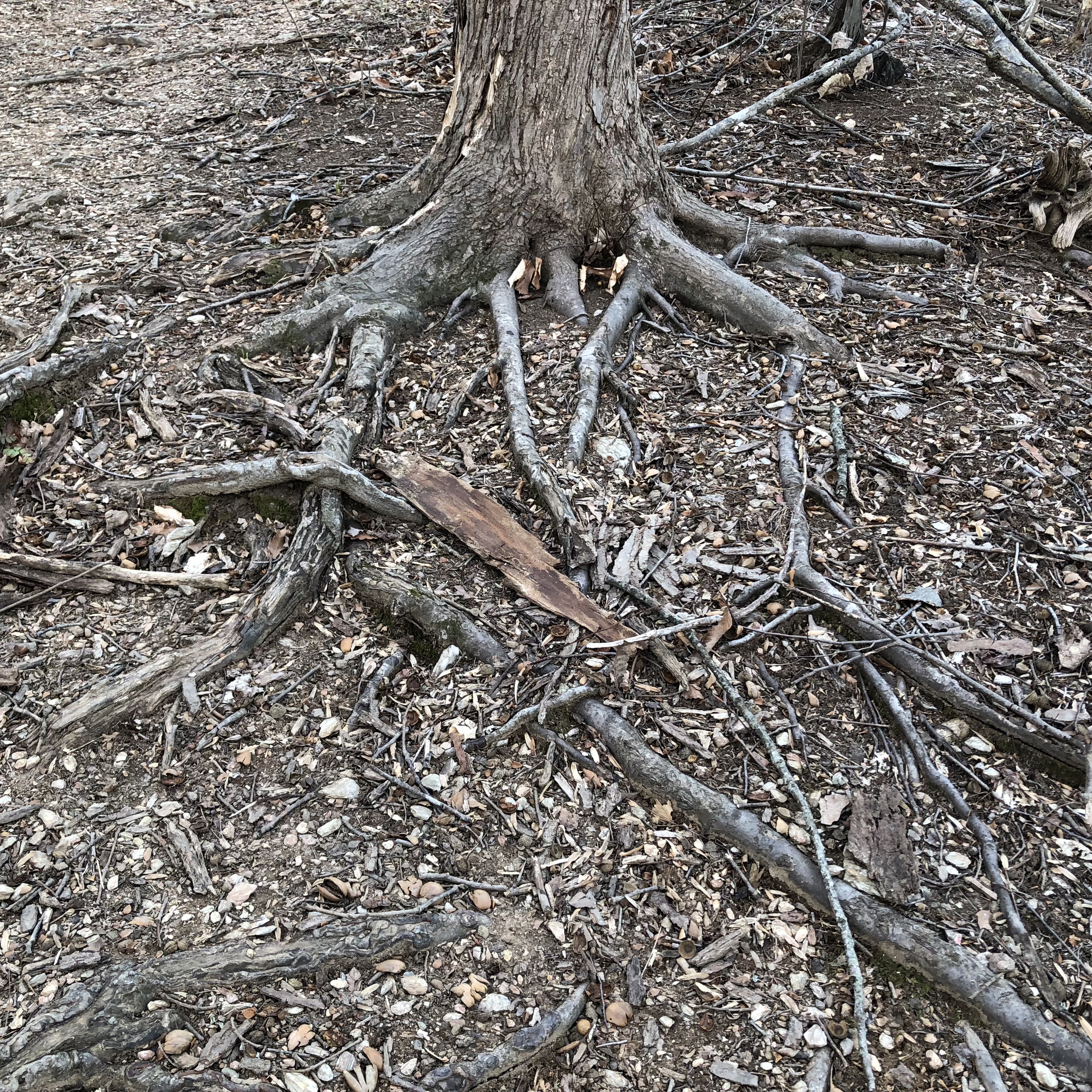
This photo gives a little insight into how the roots grow and how far they may extend. The tree is alive and it is on a bank where the ground periodically gets washed away, exposing part of the root system. These roots wouldn't typically be on the surface.
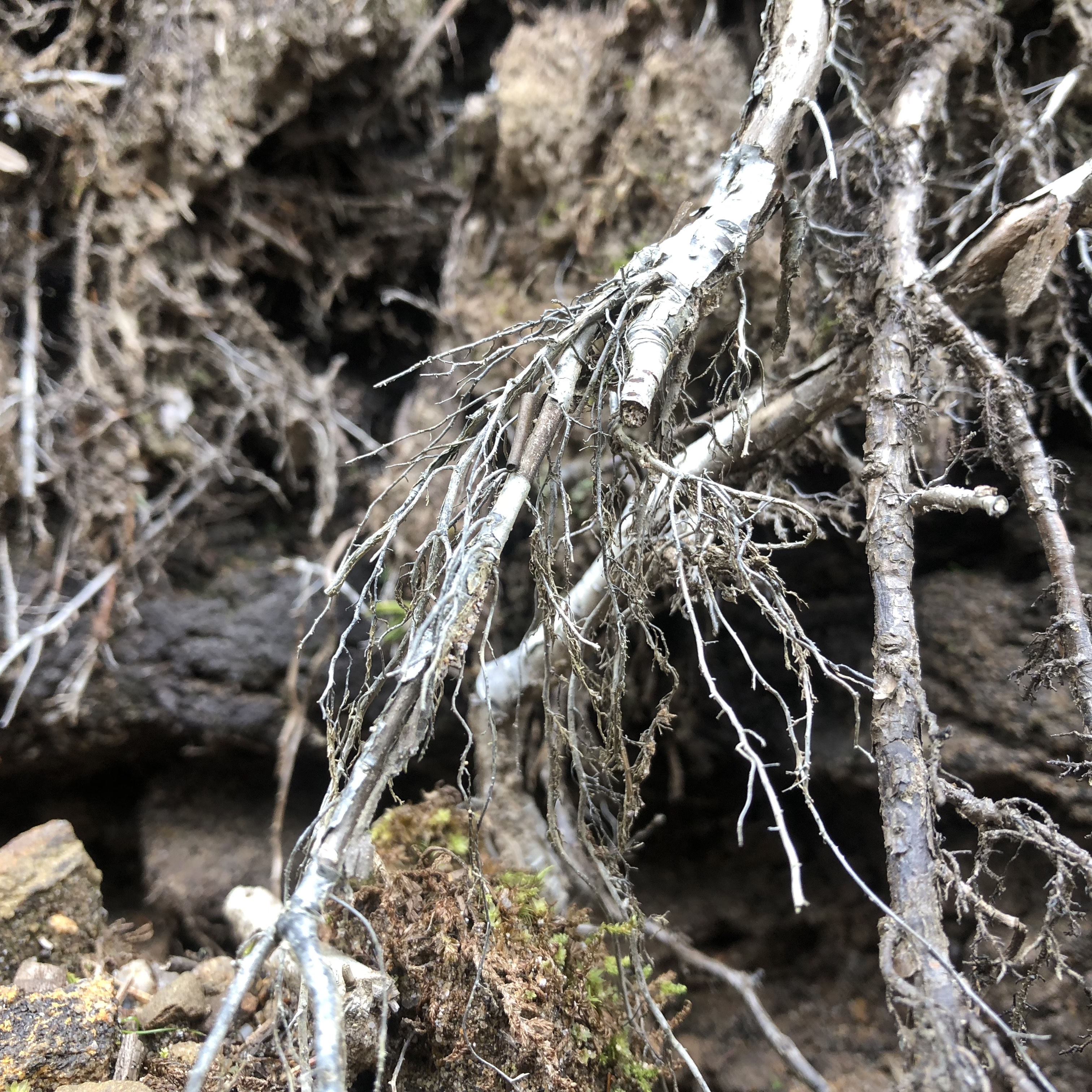
These photos were taken after significant rainfall washed away the side of the bank. These types of situations are really the only way to get relatively accurate insight into what root systems really look like.
Non-woody secondary roots
As you probably figured, non-woody roots proliferate from woody roots, and they have not undergone secondary growth. Their primary function is nutrient absorption. These roots are small and only live up to a few weeks. They have a variety of intricate functions that help keep the tree alive. The tips of the non-woody roots are called first order roots. They are the most energy costly for the tree to maintain, and they can account for as much as 90% of the root system.
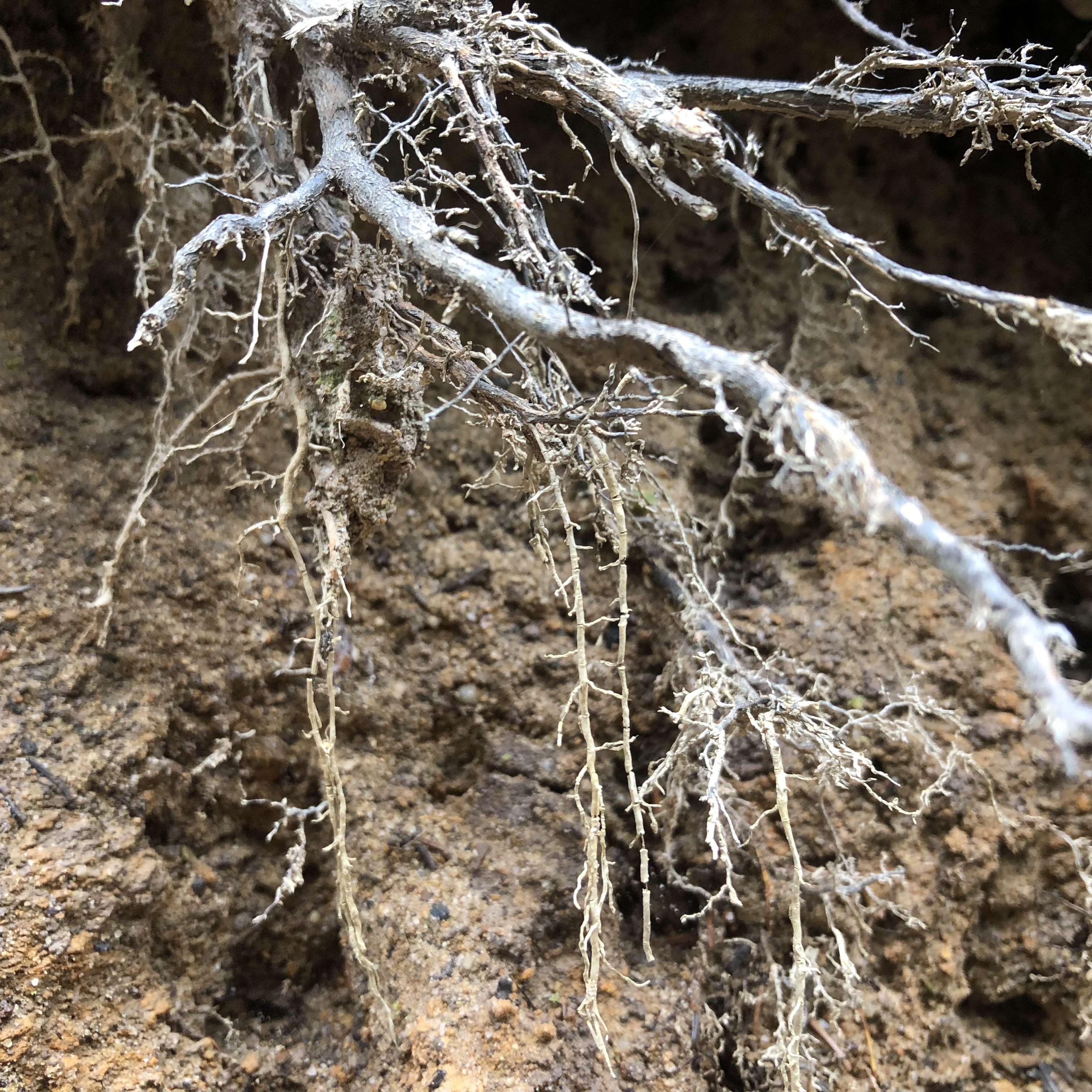
Take away: Trees have miles of small roots that are easily damaged and provide nutritional support.
References:
International Society of Arboriculture
Forest Extension: Tree Biology
Coming next: Roots 101: Tree Root Systems - learn about the 3 main kids of tree root systems.
